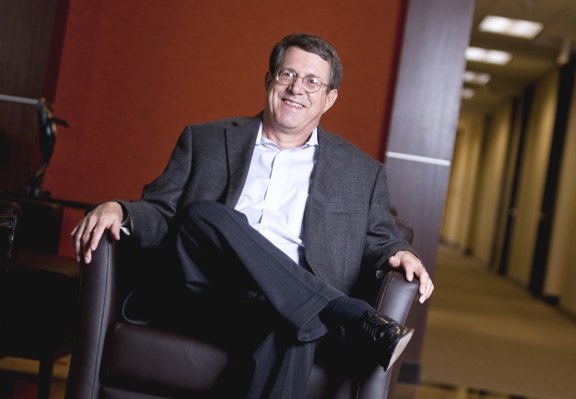Lannie Dietle received his 33rd US Patent on Sept. 1, 2015, during his 33rd year of employment with Kalsi Engineering. All but three of the patents are related to advancements in rotary sealing technology. Mr. Dietle’s inventions are used in nearly all of the company’s rotary shaft seal product lines, and cover technology related to improving interfacial lubrication, environmental exclusion, and temperature capacity. In addition to the United States, Mr. Dietle has seal-related patents in Australia, Canada, China, France, Germany, Great Britain, Japan, and Russia.
Mr. Dietle credits his seal-related accomplishments to the company founder’s long-term financial commitment to rotary seal research, and says that nothing could have been accomplished without a talented group of colleagues, each of whom exceed his own abilities in various ways. He also points out that his colleagues are co-inventors on many of the patents, and each has many decades of irreplaceable experience in the field of rotary sealing.
Dietle’s initial job responsibility at Kalsi Engineering was manning the company’s first seal test fixture, as part of a consulting project. After that project, this fixture was used, over the course of several years, to develop the company’s inaugural seal product line, which was the brainchild of the company founder, Dr. M. S. Kalsi. Since then, the company has always had a well-equipped seal testing laboratory, which has allowed the performance of new design ideas to be compared to commercially successful designs in realistically harsh operating conditions. The laboratory has also allowed improved hardware implementations to be evaluated, so that the company can provide testing-based advice on how to best incorporate the seals into customer equipment.
Early on, Mr. Dietle provided design guidance on implementing the seals in the first few sealed bearing mud motors of several small, entrepreneurial oilfield companies. The tools were successful, and he now has the quiet satisfaction of knowing that those small companies are the lineal ancestors of many of the large seal customers the company services today. Over the years, Mr. Dietle has provided design assistance on many different types of customer equipment in various industries.
As a result of the company’s leadership in oilfield rotary seal technology, the Department of Energy awarded a Small Business Innovation Research (SBIR) grant to Kalsi Engineering in the 1990s. As part of the SBIR project, Mr. Dietle was assigned the task of designing a mud motor that could be used for research purposes, so the company would have firsthand experience with rotary seal performance in actual downhole drilling conditions. The lessons learned from that tool were the genesis of the Kalsi Seals Handbook™, which Mr. Dietle created to disseminate the best design practices for implementing Kalsi Seals in oilfield mud motors. In the ensuing decades, the handbook became a cooperative effort among a group of interested employees. The handbook has grown to 53 chapters, and provides comprehensive advice on implementing the company’s seal technology in many different types of rotary equipment.
Mr. Dietle graduated with honors from California University of Pennsylvania in 1974 at age 20, and began his working career with Agway Petroleum, Inc., in Pennsylvania. During the Iranian oil crisis, he accepted a design position with NL Baroid in Houston, Texas, where he was involved in the design of various types of drilling fluid-related equipment. That employment ended with the massive layoffs that occurred during the great oilfield bust of 1982. The help wanted ads in the newspaper were bereft of engineering positions, and one all-too-real joke back then was based on the waiter at a restaurant being a laid off physicist.
While at Baroid, Mr. Dietle briefly worked on a design project with a talented consultant named J.K. Wang from Kalsi Engineering. With a new mortgage, a new baby, and no job, he called JK, and asked if any work was available. To his surprise, he was invited in for an interview, and was hired. His long-term loyalty to the company stems from Dr. Kalsi’s willingness to take on a new employee during that dark and gloomy period of Houston’s economy, and he is always ready to give accolades to Dr. Kalsi for having the vision to see the oilfield bust as an opportunity for a consulting firm.
At the job interview, Dr. Kalsi asked the standard question, “What do you want to do with your career?” Dietle replied that he wanted to help to develop a new product, and then support it. Looking back, he notes that this probably wasn’t the brightest answer, even if true, because Kalsi Engineering was strictly a consulting firm at the time. Little did he know that Dr. Kalsi dreamed of developing a revolutionary rotary seal product line, and that he would get to participate in the development and advancement of that product line over a satisfying three decade-plus career.

